Choosing a mirrorless camera (Summer 2012 camera review)
How to choose a mirrorless camera

In general, except, in fact, “DSLRs”, no other cameras have this same mirror. However, cameras with interchangeable lenses, which are in many ways similar to those same “DSLRs,” are called mirrorless. You can also often find the name “system camera” and the designation DSLM.
Removing the mirror allows you to reduce the “working distance” - the distance between the lens mounting plane and the image sensor plane. And this, in turn, makes it possible to reduce the overall dimensions of the camera. Is it possible that “mirrorless” cameras, due to the lack of an optical viewfinder and the need to install an electronic viewfinder in addition to the LCD screen, have a relatively short battery life - 300-500 shots on average.
Due to their small dimensions, as well as lower prices than DSLRs, mirrorless cameras have become very popular, especially among amateur photographers.
So, you wanted to buy yourself a mirrorless camera. Where to start choosing the right model?
Crop factor
One of the most important parameters when choosing a mirrorless camera is the crop factor. Simply put, this is a number showing how many times the size of the camera’s sensor (matrix) is smaller than a full frame measuring 36x24 mm. Modern DSLRs mainly have crop factors of 1.5, 1.6, and, in fact, 1. Mirrorless cameras have more choice - in addition to those already mentioned, 2 and 2.7 are also widely used.
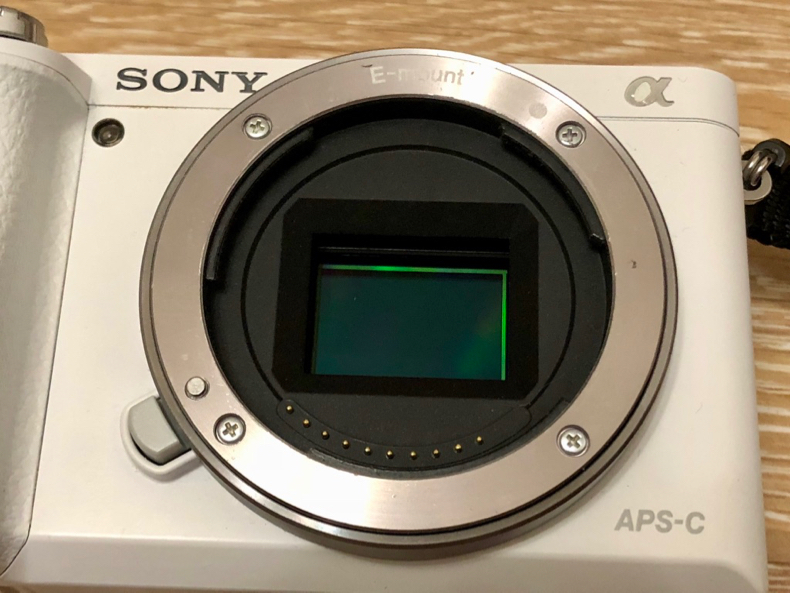
mount and 1.5 crop factor sensor
The crop factor value helps in many cases - for example, when calculating the equivalent focal length. If we have a lens with a focal length of 18 mm screwed to a camera with a matrix having a crop factor of 1.5, then the equivalent focal length of the resulting image will be 1.5x18 = 27 mm. That is, a full-frame camera would need a lens with a focal length of 27 mm to get the same frame with a similar geometry.
However, the practical significance of the crop factor is different. The higher the crop factor, the smaller the matrix, the less light it receives and the higher the depth of field of the imaged space (DOF) at the same aperture number f. Moreover, the latter can be a plus, especially when filming video and subject photography. It's easier to focus and more objects in the frame will be in focus.
Bayonet (system)
Interchangeable lenses are designed to be compatible with specific lens mounts—these mounts are called mounts. As a rule, each manufacturer has its own proprietary mount (or several mounts), but there are exceptions to this rule.
For example, Sony has two types of mounts - Sony E and Sony A. E is used in mirrorless cameras with a crop factor of 1.5 and 1, and Sony A (Minolta A) is used in DSLRs.
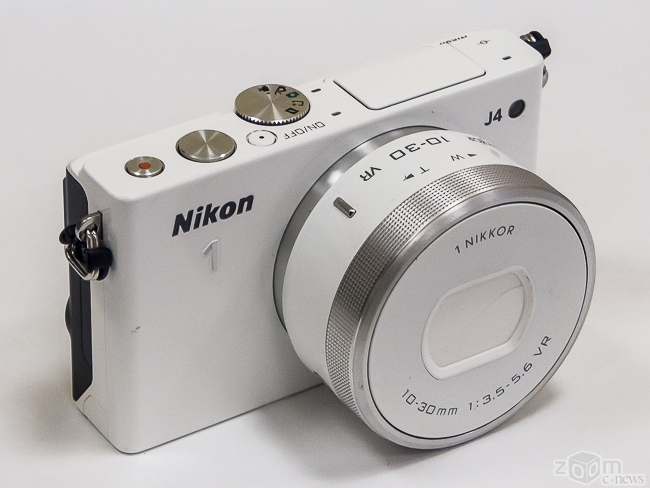
Nikon J4 mirrorless camera is one of the most compact mirrorless cameras
The same can be said about Nikon. The company uses the Nikon F mount only in SLR cameras, and for mirrorless cameras a different format has been developed - Nikon 1. These mirrorless cameras, by the way, have the highest crop factor - 2.7, like the compact digital cameras Sony RX100 and Canon G5X. Therefore, in our opinion, instead of Nikon 1 mirrorless cameras, it is better to take one of these compacts.
But the Micro Four Thirds (Micro 4/3) mount is used by several manufacturers: Olympus and Panasonic. That is, Olympus lenses fit perfectly with Panasonic cameras and vice versa.
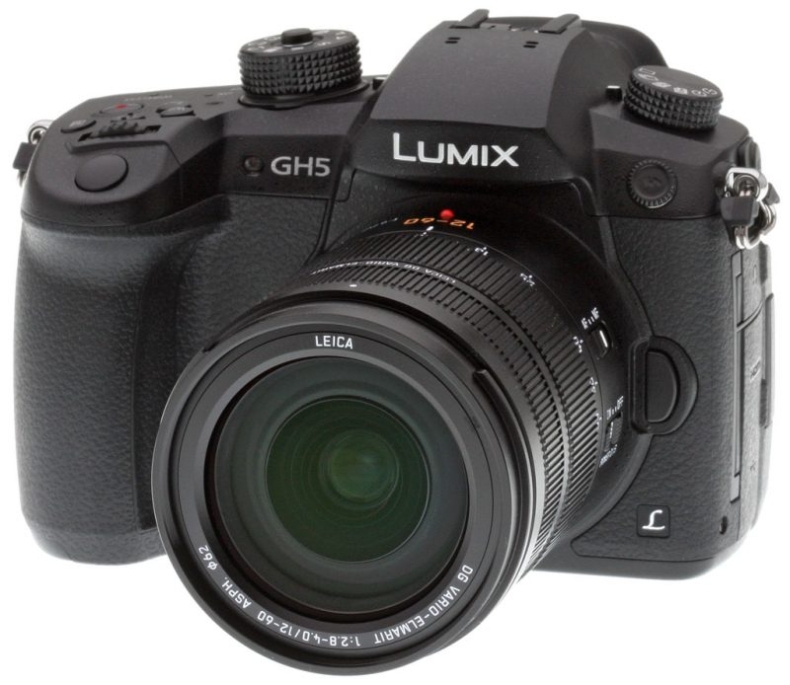
Panasonic GH5 mirrorless camera is a great option for shooting video
When choosing a mount, it is important to first estimate how many lenses are available for it, what they are, and how much they cost. “Moving” from one system to another is quite difficult - you will have to sell both the camera and all the lenses and buy everything new. This can be quite costly. Therefore, choosing a mount is essentially the most important step in choosing a mirrorless camera. If you eventually want to change your camera to a more modern or more functional one, you can probably find many suitable new products from the same manufacturer, but you won’t have to change lenses.
Lenses
The temptation of any beginning photographer is to buy lenses for all occasions. Wide-angle, tele, portrait, macro. The truth of life is that if you don't make a living from photography, you don't need them. Ideally, you only need one or two lenses, but it is advisable that at least one of them is a prime lens with a high aperture - f/1.8 or even f/1.4. With its help, you can get maximum image sharpness, which is especially useful when the camera matrix resolution is 20 megapixels or higher.
Also, as an option, you can buy a zoom lens with a constant aperture (ideally f/2.8), but this will be very expensive.
The author of these lines makes do with two lenses. One is a standard one, which came with a camera (“whale”) 16–50/3.5–5.6 mm with a camera crop factor of 1.5. The second is a 35/1.8 prime lens. Here, aperture values are indicated separated by a slash.
Cameras for professionals
We have decided on the basic concepts, now let's go through specific product categories.
In fact, if you consider yourself a professional, then you don’t need our advice. However, in case you are a professional photographer, but have previously worked only with DSLRs, and then decided to try mirrorless cameras not as a second camera, but in real life, then we recommend the latest editions of Sony Alpha A7: II or III. These are full-frame mirrorless cameras that provide truly “professional” quality. At the same time, they are lighter and even cheaper than their “mirror” counterparts.

Sony Alpha A7 full-frame mirrorless camera - for professionals
Unfortunately, there are no direct competitors to the Sony A7 in the mirrorless camera market today. In any case, if you are interested in the full frame. However, there are even medium format mirrorless cameras - the Hasselblad X1D and Fujifilm GFX 50S.
Cameras for amateurs and beginners
For non-professional photographers, we recommend, firstly, not to chase the most expensive models. It is better to buy an expensive lens and a cheaper camera than vice versa. In addition, almost all manufacturers do not change matrices in every new camera model. For example, Olympus still uses, with minor changes, a matrix developed for the OM-D E-M5 camera, which was released back in 2012.
Sony has seriously redesigned the image sensor since the NEX line of cameras, but little has changed since the A6000 (2014). The same goes for Panasonic and Fujifilm, as well as Canon.
However, Canon mirrorless cameras have not gained much popularity - they take quite a long time to focus and, in general, are not particularly functional, although their advantage is that they use the same image sensor as amateur-level Canon SLR cameras.

Fujifilm X-T1 mirrorless camera - for retro lovers
Fujifilm is suitable for retro lovers because of its appearance. They also shoot very well, but previously one could praise the manufacturer for the absence of “extra” lenses in the line - yes, all the lenses were not very cheap, but the image quality and functionality were at their best. Apparently, under market pressure, Fujifilm began to make not only inexpensive cameras, but also cheap lenses. Moreover, some camera models and lenses (for example, Fujifilm X-E3 Kit) seem to be copied from Olympus. By the way, we do not recommend using Fujifilm (as well as Olympus) for video shooting.
Sony are multi-functional all-rounders. They take both video and photos excellently, but the price of new models can be intimidating. Fortunately, relatively old ones - the same A6000 - can still be found on sale. True, there is no video shooting in 4K yet - for this you can take the updated model, the A6300.
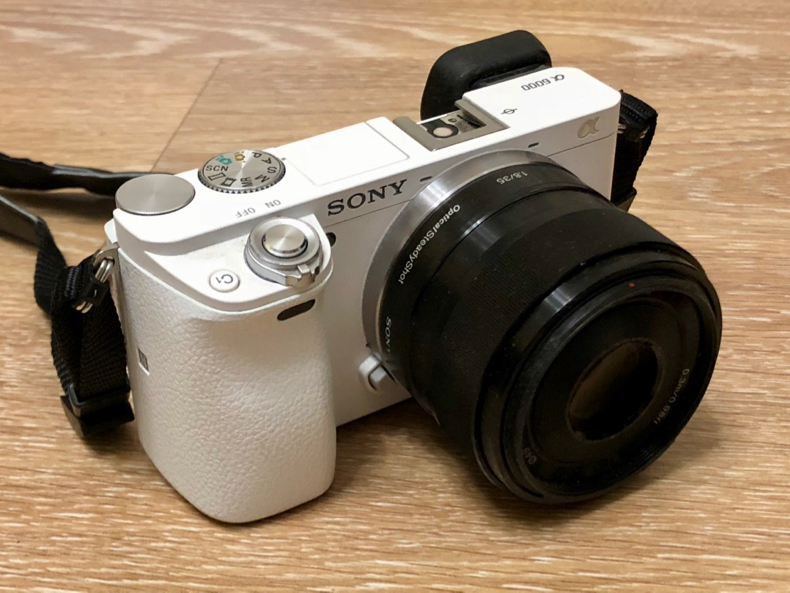
Sony A6000 mirrorless camera with 35/1.8 prime lens
Panasonic Lumix G series - these cameras are used primarily for shooting video. They also do a good job with photos, however, both functionality and convenience are “tailored” specifically for video shooting. For example, Sony still does not have the ability to start shooting video using an application on a smartphone (which is funny, because the Sony RX100 has such a function). Another important advantage of Panasonic cameras is that the manufacturer has models for different budgets. Let us remind you that when upgrading to a more expensive camera, you will not have to buy lenses again. By the way, since Panasonic cameras have a Micro 4/3 mount, there are the largest number of lenses on the market for them - also in different price categories, from very cheap to very expensive.
The best mirrorless cameras of 2012
Mirrorless digital cameras with interchangeable lenses have been on the market for several years. Their popularity is growing at a very fast pace. The idea of a compact camera with a choice of optics and decent shooting quality appealed to many users. Therefore, almost all leading manufacturers of photographic equipment have already entered the market of mirrorless systems with their models - some earlier, others later.
As a result, today we have a fairly wide selection of mirrorless camera models designed for both beginner photography enthusiasts and professionals. Many of the latest models of mirrorless cameras can successfully replace a DSLR. To be convinced of this, just look at the technical characteristics and functionality of mirrorless digital cameras of the 2012 model range. Among them, several of the most interesting models can be noted.
Panasonic Lumix DMC - G 5
This year, Panasonic introduced a new member of the LumixG family of mirrorless cameras – the compact and lightweight DMC-G5 model. This small mirrorless camera features a 16-megapixel sensor with pixel blending technology and a detachable MicroFourThirds compliant lens. The new product is the successor to the popular compact camera Lumix G3.
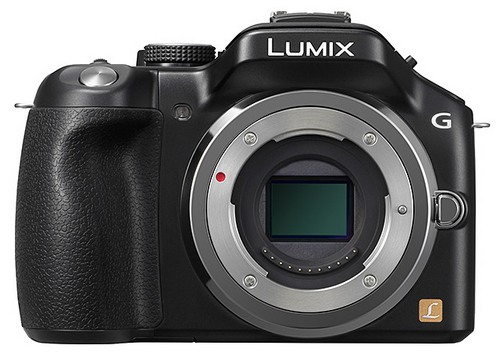
An updated CMOS sensor and powerful VenusEngine image processor allow for continuous shooting speeds of up to 6 frames per second when using the mechanical shutter. The LumixG5 camera is equipped with a contrast autofocus system, which, according to the manufacturer, is superior to the phase detection autofocus system used in digital SLR cameras, not only in speed, but also in accuracy.
The PanasonicLumix G5 mirrorless camera has a three-inch rotating screen with a resolution of 920,000 dots, and compared to the previous model, image output latency in the new camera has been reduced by almost 18%. This should make shooting fast moving subjects much easier. Using the camera, you can record Full HD videos in a resolution of 1920 x 1080 pixels. To do this, there is a separate button on the camera body that allows you to instantly start shooting professional-quality video. Beginning photography enthusiasts will appreciate the intelligent iA and iAPlus modes, in which the camera can automatically select not only shooting parameters, but also artistic filters that are most suitable for a specific scene.
Sony NEX-6
Another mirrorless camera introduced this year is the Sony NEX-6 interchangeable lens camera. It should be noted that the popularity of the NEX series of system cameras from Sony has remained at a high level for several years. The new NEX-6 aims to fill the gap that existed between the NEX-7 and NEX-5R mirrorless cameras. Sony has set out to develop a new mirrorless camera that is more affordable than its flagship models, while still packing all the best features that were introduced in the 5R.
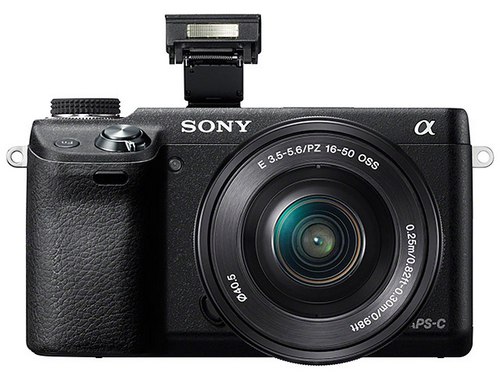
This is how the Sony NEX-6 model was born, the main features of which were a 16-megapixel APS-C sensor with high sensitivity and hybrid autofocus. FastHybrid AF is a high-speed hybrid autofocus system ideal for tracking moving subjects across the entire frame. And the APS-C image sensor (23.5 x 15.6 mm) and BIONZ processor guarantee sensitivity up to ISO 25600 for clear photos in low-light conditions.
Another important feature of the Sony NEX-6 is the addition of an electronic viewfinder, which was missing from many NEX series models. This means that photos and videos can now only be taken using the OLED display, which provides the photographer with various additional information when shooting, such as useful information about the brightness of the scene. The NEX-6 mirrorless camera also features a built-in Wi-Fi module and a convenient dial switch, similar to that found in DSLR cameras, for instantly activating the desired settings.
Samsung NX20
The NX20 is the new top model in the line of mirrorless cameras from the South Korean manufacturer. The main differences between the new product and the previous models NX10 and NX11 are a higher matrix resolution, a built-in Wi-Fi module and a three-inch rotating AMOLED display. The Samsung NX20 camera has a 20.3-megapixel APS-C sensor, which allows it to provide photo image quality at the level of digital SLR cameras.
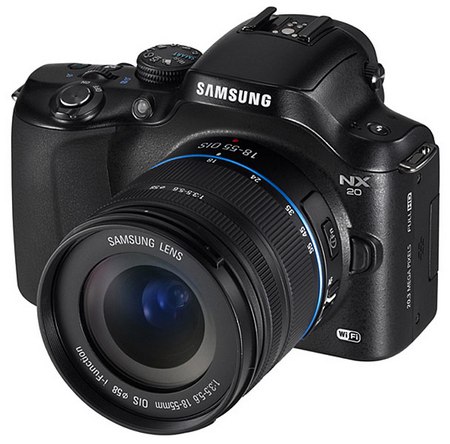
Thanks to the larger physical dimensions of the sensor, each individual pixel receives more light, which guarantees lower noise levels and greater dynamic range. As a result, Samsung's mirrorless camera has a sensitivity range of up to ISO 12800, allowing you to take clear photos in low-light conditions. The camera's AMOLED display makes it possible to compose the frame most accurately and shoot from almost any angle. It features deep blacks and vibrant colors that won't fade even in direct sunlight.
The Samsung NX20 system camera has a built-in SVGA EVF electronic viewfinder. The camera has fast autofocus, and in continuous mode it can shoot at up to 8 frames per second. Moreover, as the manufacturer claims, the shutter delay does not exceed 40 milliseconds. The new camera sensor allows you to shoot Full HD videos at 30 frames per second.
It is noteworthy that when shooting video, the system can be supplemented with an 18–200mm zoom lens. Support for the Wi-Fi wireless protocol makes it possible to connect the camera to a wireless network and save captured photos directly to your computer or to cloud storage.
Canon EOS M
Canon is one of the last of the leading camera manufacturers to enter the compact mirrorless camera market. The company's long-awaited new product in this market segment was the EOS M model, which incorporated many of the technical solutions previously found in the EOS 650D digital camera. The EOS M is a mirrorless interchangeable lens camera equipped with an 18-megapixel APS-C CMOS sensor.
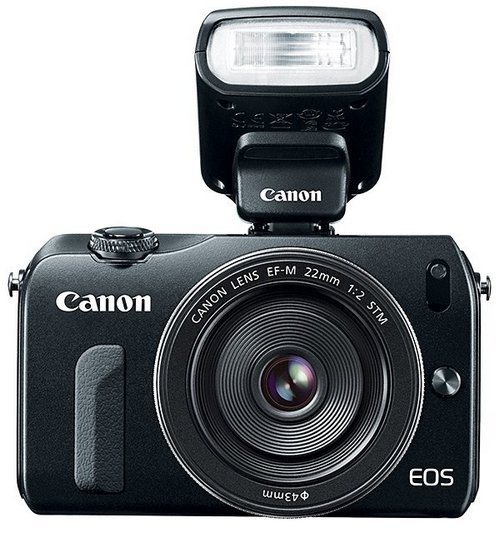
What sets this system camera apart is its use of a hybrid autofocus system designed to ensure superb sharpness in your photos. The hybrid autofocus system is capable of operating in LiveView mode while recording video. The ClearView II LCD touch screen with a diagonal of three inches is responsible for the composition of the frame and ease of control. The screen is the main means of operating the camera, as there is no built-in electronic viewfinder.
Additionally, the Canon EOS M camera does not have a built-in flash. Despite this, it is still possible to take high-quality photos in low-light conditions without a flash or tripod thanks to a maximum light sensitivity of ISO 12,800, expandable to ISO 25,600. The Canon camera gives the photographer the opportunity to use both fully manual exposure control and automatic shooting modes. The new product has a new EF-M lens mount; using an additional adapter, you can connect branded EF and EF-S lenses to the camera.
Fujifilm X-E1
The X-E1 mirrorless camera is a mid-price segment model presented by Fujifilm following the expensive, top-end camera X-Pro1. The new product inherited from the X-Pro1 the XF-mount type and the same type of X-Trans CMOS image sensor in APS-C format with a resolution of 16 megapixels. But at the same time, the X-E1 camera has smaller dimensions and weight, lower cost, and higher autofocus speed. The X-Trans CMOS sensor, already proven in the X-Pro1, provides a wide sensitivity range from ISO 100 to 25600. The large APS-C format sensor guarantees the highest image quality with a minimum of digital noise.
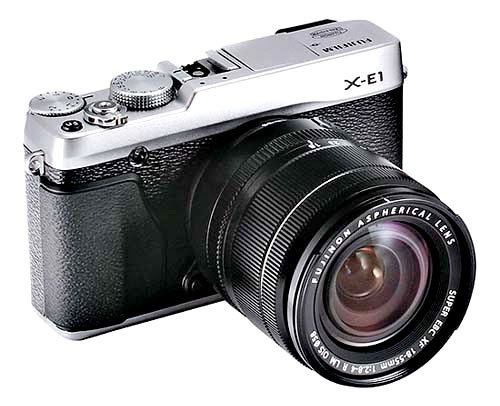
The X-E1 features a built-in OLED electronic viewfinder with a resolution of 2.36 million dots and a unique lens structure consisting of two glass elements and a dual aspherical element. A wide-angle electronic viewfinder complements the user-friendly 2.8-inch LCD display. The camera from Fujifilm provides the ability not only to take digital photos in JPEG or RAW format with a maximum resolution of 4896x3264 pixels, but also to record FullHD videos at 24 frames per second. This model is compatible with interchangeable lenses for X-Mount and M Mount.
Olympus OM-D E-M5
And finally, another interesting mirrorless camera of the 2012 model range is the Olympus OM-D E-M5 camera, which is a kind of reincarnation of the OM line of film cameras that was popular in the past. The Olympus OM-D E-M5 camera is designed primarily for sophisticated enthusiastic photographers, therefore it is equipped with serious technical and functional capabilities.
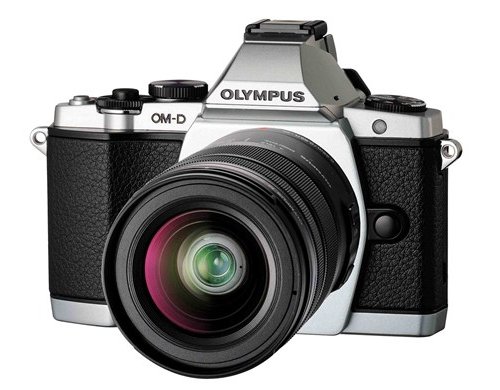
Housed in a compact, lightweight magnesium alloy body, the camera features a 16-megapixel Panasonic CMOS sensor, essentially the same as the one found in the Lumix G3 and GX1 system cameras. This is one of the most advanced MicroFourThirds matrices currently available. The camera updates sensor information 120 times per second and provides continuous burst shooting at 9 frames per second.
Other features of the OM-D E-M5 include a bright, rotating three-inch OLED display and a 1,440,000-dot electronic viewfinder. The most important point was the appearance of a built-in image stabilization system in a mirrorless camera. Moreover, the stabilization system due to the shift of the matrix works in five directions at once: with horizontal and vertical displacements, shifting back and forth and during rotation. What’s important is that the stabilizer works for both photo and video shooting.
In addition, the Olympus camera received fast contrast autofocus with 3D tracking function. Thus, the mirrorless camera not only became faster to focus, but also received excellent tracking autofocus for shooting dynamic scenes.
Source: Photokomok.ru - tests and reviews of cameras (when quoting or copying, an active link is required )
Choosing a mirrorless camera (Summer 2012 camera review)
Mirrorless cameras that offer the option of interchangeable lenses have been on the market for more than four years, but they still seem like a novelty. All leading photographic equipment manufacturers presented their models of mirrorless cameras. Some earlier, some later. This explains the difference in the level of technological development of this class of cameras. In this article we will conduct a comparative analysis of cameras, lenses and accessories from various manufacturers.
Micro 4/3
The Micro 4/3 camera was the first mirrorless camera to hit the market in 2008. In essence, it is a simplified model of the 4/3 system. It differs from its older brother in the absence of a mirror, a shortened working length and a reduced bayonet diameter. These cameras use 4/3 size matrices (17.3x13 mm), rather than the usual APS-C (23.6x15.7 mm). Initially, the advantage of Micro 4/3 was the ability to use adapters to connect 4/3 lenses, which made it possible to maintain autofocus and automatic exposure. There is no need for this at the moment. The Micro 4/3 system provides the widest choice of optics for mirrorless cameras. The range of lenses includes anything from ultra-wide-angle zooms to super-telephotos. Now Micro 4/3 is the only camera with a high-quality fast zoom (12-35 mm f/2.8, EGF 24-70 mm) and the largest range of fast lenses, the focal length of which is: 12/2, 14/2 .5, 17 /2.8, 20/1.7, 25/1.4, 4 5/1.8, 45/2.8 Macro and 75/1.8.
Until recently, 4/3 matrices were of lower quality than APS-C matrices. The new generation of cameras, such as the Panasonic GH2, GX1, G 3 and G5, Olympus E-M5, OM-D, is in no way inferior to mirrorless cameras of other systems, and the Panasonic GH2 is still a reference model, the video quality of which has not yet been surpassed by anyone.
Another positive factor of 4/3 systems is the wide selection of flash systems. HSS (High Shutter Synchronization) technology is supported by almost all Micro 4/3 cameras, and Olympus technology provides the ability to use flashes that support wireless control.
From all of the above, we can conclude that the Micro 4/3 system is the most advanced mirrorless system at the moment. The best mirrorless camera on the market is the Olympus OM-D. If you are satisfied with the size of the matrices and the choice of lenses, Micro 4/3 will be the best choice.
Samsung NX
Samsung has released the first cameras with APS-C type matrices in the NX series. The first generations of cameras of this system were slightly inferior to the best Micro 4/3 models. Samsung has now introduced a new line of next-generation cameras that feature a 20-megapixel sensor. These cameras have caught up with the quality of the Sony matrix.
Samsung NX systems provide a large selection of optics. However, the range is not as wide as for Micro 4/3 systems. In addition to four zooms, which include: 18—55 f/3.5—5.6; 20—50 f/3.5—5.6; 50—200 f/4—5.6, and of course 18—200 f/3.5—6.3. Users can choose high-quality fast aperture primes.
Samsung provides a fairly meager selection of flashes. You won't be able to find a single flash in the line with a rotating head or HSS. Wireless control is not supported at all, TTL cables do not exist at all. A significant disadvantage of Samsung NX cameras is a certain slowness, which manifests itself even in models of the latest lines, such as NX20, NX210 and NX1000.
The price/quality ratio of the Samsung NX is very noticeable. At a fairly low price, you can get fairly good optics, which are much cheaper than their analogues.
Sony Alpha NEX
In 2010, the Sony Alpha NEX camera was released. For more than two years, the company has created many models of mirrorless cameras. These are NEX-3, NE X-5, NEX-C3, NEX-5N, NEX-F3 and the last one is N EX-7. Despite the abundance of cameras, the choice of optics for them is rather limited. The system has only three zooms and a small number of primes available. The lenses cannot boast of good quality, and only the very expensive Zeiss 24/1.8 and 50/1.8 show good results. The remaining lenses were not of the best quality, especially in combination with the 24-megapixel sensor installed in the NEX-7. But it is not all that bad. Recently, two lenses appeared in the system - Sigma 19/2.8 and 30/2.8. They perform well as a good wide-angle lens and a fairly fast lens.
The senior model of the Sony NEX-7 line of mirrorless cameras is equipped with a built-in viewfinder. It also allows you to use external flashes using the Sony/Minolta hot shoe. All other cameras do not support this technology.
The quality of video recording in NEX system cameras is not inferior to Micro 4/3. Sony provides the ability to use third-party lenses connected via adapters. The matrices in the NEX line of cameras are the highest quality among the entire selection of mirrorless cameras.
Nikon 1
Niko n 1 cameras appeared on the market only last year. They instantly caused a flurry of indignation from amateur photographers. This is due to the fact that Nikon uses a very small matrix in its mirrorless cameras, the size of which is 13.2x8.8 mm. Such matrices are used in cheap point-and-shoot cameras. The body of the device is also cheap and simply made. The controls are simplified, and the device does not provide the ability to use external flashes. Probably the only positive feature of the camera is support for hybrid phase and contrast autofocus. This allows Nikon 1 to take high-quality images in autofocus tracking mode.
The choice of lenses for Nikon 1 cameras is very poor. Currently only four models are available:
- 1 Nikkor VR 10—30 mm f/3.5—5.6 (27—81 mm EGF);
- 1 Nikkor 30—110 mm f/3.8—5.6 (80—300 mm EGF);
- 1 Nikkor 10—100 mm f/4.5—5.6 (27-270 mm EGF);
- 1 Nikkor 10 mm f/2.8 (27 mm EGF).
Nikon 1 cameras can be recommended for purchase only to those for whom photography is entertainment and not a hobby.
Fujifilm X-Pro 1
The Fujifilm X-Pro mirrorless camera is one of the youngest in its family. Its announcement took place in January 2012. It went on sale only in the spring. Currently, the system has only one camera, X-Pro 1. It has a choice of three high-aperture lenses, the focal length of which is: 18 mm (EGF 27 mm), 35 mm (EGF 53 mm) and 60 mm (EGF 90 mm) with macro photography capability. The camera is equipped with an excellent matrix and a hybrid viewfinder. It provides high quality photos even at high ISOs. Given the high price of the camera and the lack of choice of models, the X-Pro 1 provides excellent competition and is the most remarkable mirrorless camera on the market. If the price doesn't scare you, you can safely buy this camera. Excellent quality guaranteed.
Canon EOS M
Canon released its EOS M camera just the other day, so there are few details about this model. The EOS M is currently the only camera in the system. It has an 18-megapixel APS-C sensor (presumably the same as in the E OS 650D DSLR camera) as well as a hybrid autofocus system. At the moment, only two lenses have been released for EOS-M - a kit zoom with parameters 18-55/3.5-6.6 and a standard lens 22/2. However, using a special adapter allows you to use lenses from the entire line with Canon EF and EF-S mounts.
What should you choose?
The choice of mirrorless cameras is quite wide, and in terms of shooting quality they are not inferior to DSLR cameras. The final choice depends solely on the requirements for the device.
If your plans are to purchase a variety of gadgets and additional optics, then you should opt for Micro 4/3 or Samsung NX. In recent years, Samsung has significantly increased its authority and the quality of its products, and this certainly cannot but rejoice. Both systems are very flexible, however, Micro 4/3 is currently leading the market thanks to its range.
The best mirrorless cameras for shooting with a whale zoom are the Sony NEX and of course the Canon EOS M.
Nikon 1 will be of interest only to those who often have to shoot moving objects using autofocus tracking.
Fujifilm X-Pro 1 deserves a separate discussion. The camera's high quality workmanship, original retro-style body and high image quality make this camera remarkable. Its only drawback is its high price.
Choosing a mirrorless camera (summer 2012)

Micro 4/3
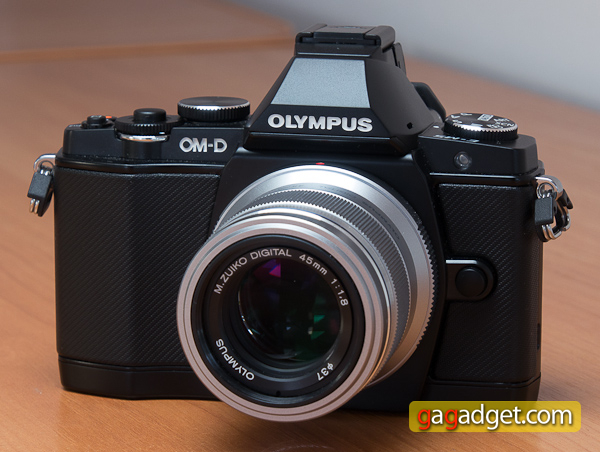
Samsung NX
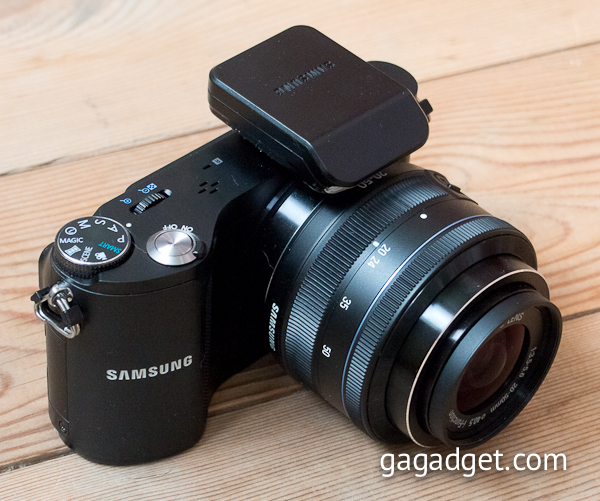
Sony Alpha NEX
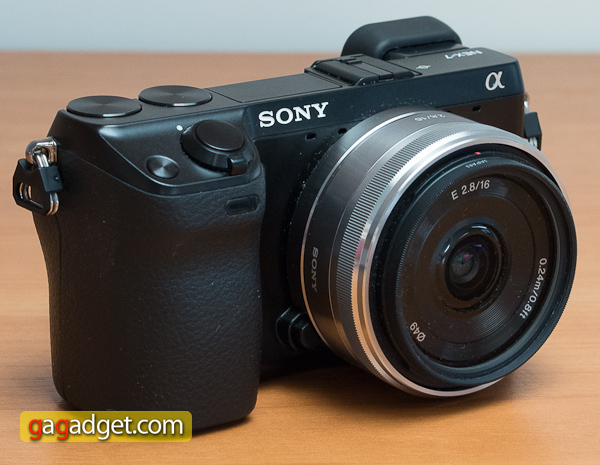
Nikon 1
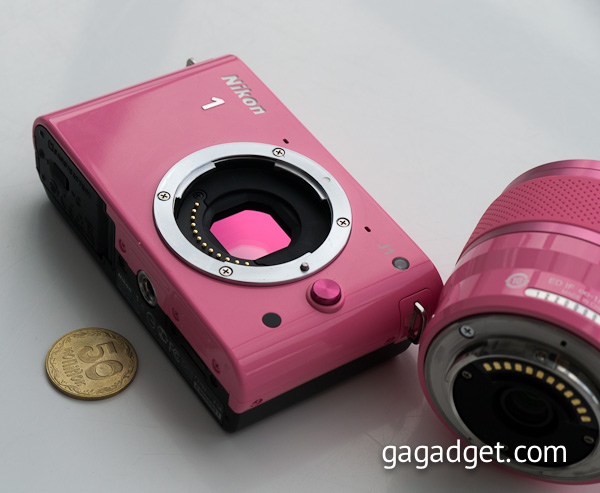
Fujifilm X-Pro 1
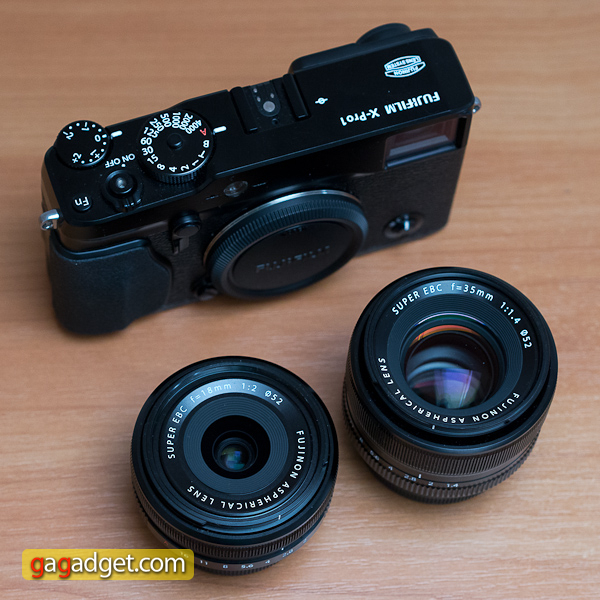
Canon EOS M
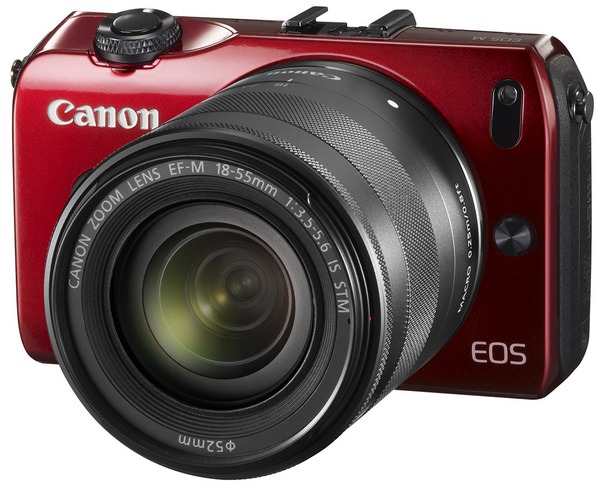
What to choose?
Subscribe to our fun channel on Telegram so you don't miss anything.
Thank you, very interesting and relevant <for me>, what can you say about the Panasonic DMC-G10, it’s just not that much money? w high
![]()
Thank you! Still, Pavel, what is the advantage of OM-D vs Lumix G5? I photograph very little, I’m an amateur, but I like to photograph tennis and skiing. Just for myself, nothing special. Panasonic is positioned as the fastest camera. Or is this no longer the case? And what is the gain from combi AF - 0.1, 0.2, 0.5 seconds? Thank you
![]()
Thank you! Still, Pavel, what is the advantage of OM-D vs Lumix G5? I photograph very little, I’m an amateur, but I like to photograph tennis and skiing. Just for myself, nothing special. Panasonic is positioned as the fastest camera. Or is this no longer the case? And what is the gain from combi AF - 0.1, 0.2, 0.5 seconds? Thank you
![]()
They can compete with DSLRs, but the price is the price for compactness :)

In terms of price/quality ratio, Sony is definitely in first place (good selection of glasses, but you can use the standard one), second place is 3/4, males are in the top three only if you find a fixed lens for a reasonable price, standard zooms are immediately ftop. the rest is for everyone
all of the above is my IMHO
![]()
In terms of price/quality ratio, Sony is definitely in first place (good selection of glasses, but you can use the standard one), second place is 3/4, males are in the top three only if you find a fixed lens for a reasonable price, standard zooms are immediately ftop. the rest is for everyone
all of the above is my IMHO
![]()
Pavel, we missed the golden mean, NEX-5N, if we talk about price-quality-optics as a verified purchase. The matrix on the five is significantly better than anything listed in this post. Compared to this, Samsung's slightly larger fleet of optics (in reality, on the shelves is very small) is only a plus for those who like to experiment with high-aperture pancakes. Sonya's pancakes promise to multiply in September, inexpensively and up to f/1.8. And the expensive ones already available are much better in quality than high-aperture glass from the Sami, the advantage of which Korean matrices, moreover, have not yet learned to fully absorb.
![]()
Already existing expensive ones - is this just ONE lens? (Zeiss 24/1.8.) Everything else that I tried (16/2.8, 30/3.5) is not very close to Samsung lenses in quality. Maybe I still liked 50/1.8, but even then it doesn’t behave well on the NEX-7.

Link from the last one. It’s also nice that the entire fleet of “adult” alphas fits perfectly onto the NEX via an adapter. Considering that the matrices on Samsung are noticeably inferior to Sony's, Nexes provide significantly more opportunities for those who like to tinker. By the way, the matrix on the top Nex-Seven is noisier than the matrix on the cheaper Nex-Seven. If possible, be sure to publish a 5N reviewer with tests, I personally don’t yet see any alternatives to it in the sense of replacing low-middle level DSRL.
![]()
The link is interesting, but personally, since last summer I haven’t received any interesting fixes for the NEX-3. sold it and dumped it on alpha.
![]()
NEX-5n is truly a gold standard, it easily fits into your pocket, the price, matrix, color rendition, touch sensitivity, everything is very, very pleasing. And lenses can be supplied from any system, picking will help you, even Soviet Helios for 100 UAH. It gives such detail that wow. 50/1.8 - I like it too. I recently chose it for a neighbor, I really didn’t want to sell her a 5n (I already have one), but having looked at everything in this price category with her, I simply couldn’t find anything better in terms of price-quality ratio. So she bought it, only the white one. Here are a few macro photos from it. By the way, I took it without rings, just rolled the paper into a tube, voila, and you have macro mode with a standard lens. https://500px.com/stavash
https://gatne.net - Socialka of the Kyiv region
![]()
The NEX-5N is an interesting thing, but not without its drawbacks: - when using the 18-55, there can be no question of any compactness - once you outgrow this same 18-55 there is not much further to move on, there is no choice of lenses
![]()
I want a Sony NEX, but I don’t know why I need it :)

NEX-5n is truly a gold standard, it easily fits into your pocket, the price, matrix, color rendition, touch sensitivity, everything is very, very pleasing. And lenses can be supplied from any system, picking will help you, even Soviet Helios for 100 UAH. It gives such detail that wow. 50/1.8 - I like it too. I recently chose it for a neighbor, I really didn’t want to sell her a 5n (I already have one), but having looked at everything in this price category with her, I simply couldn’t find anything better in terms of price-quality ratio. So she bought it, only the white one. Here are a few macro photos from it. By the way, I took it without rings, just rolled the paper into a tube, voila, and you have macro mode with a standard lens. https://500px.com/stavash
https://gatne.net - Socialka of the Kyiv region
![]()
X-Pro 1 is one of the most mirrorless cameras
![]()
Hehe, I looked at the prices for Nikon 1, it immediately became clear why it is not a “competitor”.
NB: It’s probably hard to understand why Nikon didn’t make a “cropped” DSLR, but a “camera” with an interchangeable lens. As for me, the answer is simple: D3100 and D3200. After all, entering the mirrorless market is not the opening of new markets, but a fight for existing ones, an attempt to nibble away amateur DSLR photographers from competitors. So it is quite logical that the company, having “DSLRs” at the same price as the “mirrorless” cameras of its competitors, did not create competition for itself. Moreover, Nikon’s amateur cameras are small (approx. 460 grams, I think).
In general, you need to find a “mirrorless” camera and compare it with a “DSLR” in operation, otherwise everyone is praising it, maybe they really are so good that the end of “DSLRs” is not far off. And according to the review, it is very ambiguous, I would even say harmful. The price range is simply huge. And then there won’t be enough “DSLRs” and “prosumer cameras” from the same price range to understand whether it is needed at all, a “mirrorless” camera.
![]()
useful material, I agree with the conclusions.
I would like to separately note this point - one of the key advantages of mirrorless cameras over DSLRs is their potential compactness. and from this point of view, the same NEXs with the 18-55 kit cannot offer anything interesting against typical DSLRs, and systems where there is a good selection of pancakes are much more interesting.
![]()
But the Pentax K-01 was bypassed. But this is the only camera that could even remotely compete with the image quality of the X-Pro1. But she has no problems with lenses at all. Such a diamond was missed!
Choosing a mirrorless camera (Summer 2012 camera review)
Good afternoon I decided to buy myself a mirrorless camera, since I had a desire to learn the basics of photography, and to have a compact camera so that I could take it with me on vacation, to the university, for walks, to take pictures of landscapes, etc. I want a mirrorless camera, since they are more compact, and This is a significant plus for everyday life. I took a closer look at the Sony nex 5R, the quality of the case is a little confusing, a friend has a nex 3, it quickly lost its presentation.. Among the competitors I also saw the Samsung nx300, maybe there is something else? What do you recommend? In terms of money, I’m ready to pay up to 25, regarding lenses, it seems to me that a kit will be enough for me to start with, in the future I’ll most likely buy something, but I don’t think that I will need a huge arsenal of lenses. So it goes. Thank you all very much.
I was also thinking, maybe I should take the Olympus Pen E-PM2 Kit or PL5?
Post has been edited by MatBulik - 02/02/14, 16:47
I agree with Aramis.
It is best to take newer Olympuses starting from the 4th generation - e-pm2, e-pl5, e-p5. In general, now the OM-D E-M5 has fallen in price - this is a beast, not a camera. If you have enough money, take it. It was recognized by many publications as the best camera of the year. The only thing that is probably missing there is remote control via a laptop or tablet. But this, as it were, is not what everyone needs. 🙂 In all other respects, it’s just sweet.
As for the lenses, take the 45/1.8 and the just released 25/1.8 (I think by the time you decide to buy it, it will just reach the shelves) - they are relatively inexpensive and have excellent picture quality. The first one is for portraits, and the second one is universal.
Everyone is generally good. Previously, people were delighted with the jpegs of Olympus in old matrices, but Panas had to be pulled from RAW. And now Panas has corrected himself, and Olik, having switched to the Sony matrix, has lost his “brand colors”, although his jpeg from the camera is still excellent. Sonya and Samsung also have, it seems like I didn’t notice any special problems with the automatic machine. But it’s better to learn how to do basic operations, such as setting white balance using templates. It’s a matter of minutes, and the quality of the photos will benefit from this.
Manichaean,
I took some photos on vacation with a simple DSLR, and realized that the viewfinder is very convenient. I'm choosing between nex 6 and panasonic G3, is it worth paying more for Sony?
OM-D E-M5 is good, but I consider such a unit unnecessary for myself.
Post has been edited by MatBulik - 03/05/14, 21:49
If you take the camera separately, then Sony is more interesting. And if we take the system (lenses, accessories, etc.), then the micro (Panasonic) is more interesting. The Panasonic G3 is more compact and has slightly fewer buttons than we would like. This was fixed in G5. Overall both are good. G3 for the money that is now being asked for it is absolutely a gift. I probably would have stopped with it, but if you don’t mind the money, then you can take Sonya. And for Panasonic, in addition to it, I would recommend a 20/1.7 lens - a very good and relatively inexpensive fast prime.
G5, of course.
The 3rd episode, both G and GF, for Panas came out very castrated. But in the fifth they rolled back and returned many of the cut off features. However, it's all about the price. The five is built on the same matrix and almost the same harness as the three. Therefore, photographs from them will be almost identical. But at the same time, the five has a more comfortable grip and control, and there are some other small, but important for some, differences. But in general, if the difference in price is big, then you can take three rubles - it’s also more compact (which some people like, but others don’t).
Post has been edited by Manichaean - 03/09/14, 17:02
This is good for me (especially as a lover of old cameras), but expensive. 🙁 If it weren’t for the price tags on Fuji equipment, I would be sitting on it. Their optics are excellent. In general, I would say that Fuji has now become what Leika was 20 years ago. And Leika herself was blown away - all that was left of her was her name.
Him, my dear.
Even though this is a relatively budget camera, it doesn't cut out anything particularly important compared to the older E-M1 and E-M5, each of which was recognized as one of the best cameras in the year of its release. Olympus cameras are the only mirrorless cameras that have a built-in image stabilizer (among DSLRs, only Sony and the half-dead Pentax have such a stabilizer).
The 4/3 system, to which Olympus belongs, is the leading system in terms of the number of lenses and accessories, and by a large margin.
In addition to Olympus and Panasonic, it is supported by many leading players in the photo and video market. Recently JVC announced the release of a professional 4K video camera for this system. The Sony A6000 is an excellent camera, but unless you consider it in the context of Sony’s system
Well, in addition to lenses, there are also flashes and other accessories, of which Olya has much more, including inexpensive ones - I recommend not neglecting external flashes, even if you only shoot with a whale. Many beginners don't realize how much a properly used flash can improve a picture. As for what is preferable - I don’t know about the fifty dollars from Sony - its focal lengths on the crop are not very portrait, but 45/1.8 is simply magnificent as a portrait lens, especially for the money. I would still stop at Olika.
Although Sonya's video is better. But, for example, for me the difference is not critical, especially since for video I also bought a used Panas G3 inexpensively - everything with it is at the highest level and the screen rotates in all planes like on a video camera. And in terms of lenses, it is compatible with Olik.
I want to buy this camera myself. The guys here advised me. I think there is a connection with the Sony store, complete with 2 lenses. I don’t do professional photography. for myself personally. when you never print it out on a printer at home, as a keepsake.
Review of Mirrorless cameras for different budgets
In 2019, we have already seen the release of several successful mirrorless cameras from top manufacturers. Among them are Fuji, Sony, Olympus and many others. Moreover, there are many more models ahead of us, but for now we decided to focus on those that have been in use for some time and have managed to prove themselves. So today we'll look at several mirrorless models in different price categories that may be of interest to photography fans.
Before we get started, we'll note that the prices for each camera vary, so the order is only approximate, but one way or another, in the list you will find both top models at flagship prices and budget options that will attract the attention of both amateurs and beginners .

Source: Amateur Photographer
Nikon Z6
Let's start with the camera, which many, not without reason, consider one of the best now. This is Nikon's mirrorless camera that has made it to the top despite Sony seemingly cementing its leadership in the market. The camera is equipped with a full-frame sensor with a resolution of 24.5 MP and an electronic viewfinder, which is always nice for photographers. And even with a resolution of 3,690,000 pixels.
As befits a high-quality modern mirrorless camera, Nikon is equipped with a rotating touchscreen. Its diagonal is 3.2 inches and the resolution is 2,100,000 pixels.
The camera focuses on 273 points and shoots up to 12 frames per second.
When it comes to video, Nikon also has something to brag about. The camera shoots 4K at 30p.
The Nikon Z6 offers easy control and superb photo quality. Add to all this a convenient, durable case and an F-mount adapter, and you get a universal mirrorless camera that can handle any shooting conditions.

Source: Cnet
Sony Alpha A7 II
When it comes to mirrorless cameras, I always want to mention Sony. As we have already noted, the company quickly became perhaps the leading manufacturer specializing in such cameras. So success is well deserved and a Sony camera is always a great choice. This is confirmed by the Sony Alpha A7 II. This camera, like the first Nikon on our list, has a full-frame sensor. And since it didn’t appear yesterday, its price has dropped slightly and now the camera is becoming one of the most promising for its price. So, inside you will find a 24.2 megapixel matrix capable of producing phenomenal results. Of course, there is an electronic viewfinder on the camera, with a resolution of 2,359,000 dots. The three-inch rotating display is a tradition, and a tradition that is extremely important for Sony.
The camera focuses at 117 points and, despite the fact that the system is not the newest, focusing is fast and accurate. 5 frames per second should be quite enough for amateur photography.
As for video, the age of the camera affects it. She shoots in Full HD format at 50p and this may not be enough for some. But if you don't really care about the difference between Full HD and 4K, then the Sony Alpha A7 II is the perfect choice for you.

Source: Digital Trends
Fujifilm X-T30
Let's drop the price by a few thousand more, and we have a new product from Fuji - the younger sister of the Fuji X-T3 camera. This camera is noted as one of the smallest and lightest. The APS-C sensor has an impressive 26.1 megapixel resolution, which ensures excellent photos. The electronic viewfinder looks like it was taken from more expensive models; the resolution is 2,360,000 dots. There is a monitor with a diagonal of three inches and rotation, and focusing at 425 points.
The camera shoots up to 8 frames per second and video in 4K format at 30p.
Another special feature of Fuji is that this compact camera is equally attentive to both RAW photography and JPEG shooting. Perhaps few competitors can boast of such attention to detail. In short, this camera is ideal for those looking for a convenient and, most importantly, portable option for everyday photography.

Source: Amateur Photographer
Sony Alpha A6400
This camera gets a lot of comparisons to the X-T30, and for good reason. Both mirrorless cameras are essentially direct competitors. Sony is equipped with an APS-C matrix with a resolution of 24.2 megapixels, which puts it slightly lower in photo quality than Fuji. However, it also has its advantages. The camera's viewfinder has a resolution of 2,360,000 dots, just like the Fuji's, and the three-inch touchscreen display can be rotated frontally, allowing you to take selfies. This is an oversight that affects Fuji's performance. Otherwise, the camera focuses at 425 points, shoots up to 11 frames per second and records 4K video at 30p. In many respects, the Sony Alpha A6400 and Fujifilm X-T30 are truly like twins, and here the choice between them is a little difficult. Especially considering that both cameras share the same price category. Still, Sony is more suitable for video bloggers, while its colleague from Fuji will appeal to photographers much more.

Source: Cameralabs
Olympus OM-D E-M10 Mark III
The further, the cheaper, this is precisely the principle by which we choose mirrorless cameras today. And therefore, this small and stylish camera from Olympus deservedly takes fifth place. The matrix is micro 4/3 with a resolution of 16.1 megapixels. It also has an electronic viewfinder, and on a more budget mirrorless camera this is a nice step forward, because quite recently this was an advantage of expensive models. But the viewfinder has a resolution of 2,360,000 dots and copes with its tasks without any questions. There is also a rotating LCD display, three inches and convenient. The camera focuses at 121 points, which is far from ideal compared to many, but does not disappoint during operation. 8.6 frames in a row plus 4K video at 30p only adds to the Olympus' appeal.
The camera is miniature, like its predecessor from Fuji, and, in addition, supports the same small lenses. Overall, it provides an excellent balance of price, convenience and quality.

Source: SLR Lounge
Fujifilm X-T20
Again, if you're not looking for something new, but want to get the most out of it at a more affordable price, then the Fujifilm X-T20 could be a great choice. As the name suggests, this camera is the direct predecessor of the X-T30 and the younger sister of the X-T2. The camera is not weather sealed like the T30 by the way, but it has an excellent 24-megapixel sensor, thanks to which the camera is capable of delivering excellent results. At the same time, it shoots up to 14 frames per second, is equipped with an electronic viewfinder and shoots 4K, although up to 10 minutes, no more. The same limitation exists on the X-T30.
But the camera retains its small size, three-inch display and overall leaves a rather pleasant impression. And if you take into account its price, then it is able to provide excellent results and quality. So the choice in favor of this camera will always be justified.
In general, when choosing a mirrorless camera, you will have to pay attention not only to the technical characteristics, because each camera is special and differs in some way from the rest. Personal comfort will become much more important when choosing. Since mirrorless cameras are smaller in size than DSLRs, and this is one of their main characteristics, you will always have to make a choice between a large sensor, a powerful battery and size. Small cameras can also have disadvantages, such as inconvenient button placement or controls. Plus, don’t forget about the level of cameras; not every one is suitable for professional photography.
Ultimately, we always recommend choosing only what is convenient for you.
Avant-garde for the pros: review of new mirrorless cameras
The appearance of another “system” camera, created with an eye toward professional video recording, is a good reason to conduct a general audit: how are things going with mirrorless cameras in general with video shooting, and why an amateur photographer might need it. Of course, serious devices - such as the recently released Panasonic Lumix GH4 or the just announced Sony Alpha A7S - are extremely savvy in this matter, and even too much so. Even if the buyer is willing to pay the required amount for these cameras and useful additions to them, the bulk of their functions will be unclaimed. While 4K television was officially launched in Japan at the beginning of summer, playback media that support this resolution are not even very common in our country. And to edit such detailed video footage, you need a very powerful computer and specialized software. So let's leave these cameras to the professionals.
 Sony Alpha A7S
Sony Alpha A7S
What can be useful to an amateur? You should start choosing the video recording format. If 4K still needs to be tested in professional studios, then FullHD is already a completely widespread format. An average modern computer is quite suitable for processing it. However, you should not assume that 1280x720 pixels is enough for your eyes. It’s better to immediately get more information when shooting and compress it if necessary later. However, when choosing a modern “system” camera, the consumer most likely will not encounter resolution restrictions.
Another thing is the frame rate. The maximum value of this parameter can vary between 30–60 frames/s. As with resolution, it is better to give preference to the highest specification. In 60p mode it’s very impressive, almost professionally, you can get landscape and landscape videos with smooth movement in the frame. The letters P and I, found in the description of recording formats, indicate progressive and interlaced scanning, respectively, and if the buyer wants to get maximum quality without really worrying about the size of video files, it is worth choosing devices with the first type of scanning. Otherwise, the amount of data may be halved, but the image will exhibit various artifacts in the form of ripples, combs, and flicker.
Almost any photographic lens can be used for video recording. But if you don’t want to deal with additional equipment and want to simplify the process as much as possible, then motorized zooms would be the best choice. Panasonic and Olympus were among the first to introduce such optics. In the micro 4/3 system, therefore, it will be easiest to find a suitable lens.
For Nikon 1, there are two models of motorized zooms: a compact “whale” and a large but powerful 10x. Sony, in addition to the 11x zoom with variable aperture, also offers a less “far-sighted” but high-quality PZ 18–105 mm lens with a constant maximum aperture of f/4. Fujifilm and Samsung remain outsiders in this category.

And finally, don’t forget that in addition to the picture, the video also contains sound. It will be difficult to achieve a high-quality audio track with a built-in microphone, even in stereo and with various noise reduction technologies. You should immediately select camera models that have an audio input. But its absence does not always mean that it is impossible to connect a higher-quality external microphone. For example, the latest “hot shoe” of Sony cameras is equipped with an additional contact group, through which communication is carried out with proprietary microphones installed in this connector.
The Olympus range includes a SEMA-1 unit installed in a proprietary accessory port. Through it, you can connect any microphone with a 3.5 mm jack to the camera, including the E-M5. It already comes with a high-quality two-channel buttonhole. It is worth considering that different manufacturers have different options for connecting an external microphone. Nikon and Samsung have it only in the most senior cameras, and there is no alternative solution to the problem of the lack of a corresponding port. Fujifilm offers an audio input in all models from the X-E1 onwards, and the situation is easiest with external microphones from Olympus and partly from Panasonic.
In any case, the choice of models capable of high-quality video recording among “system” cameras is large. The buyer only has to decide on his expectations and requirements. And, of course, don’t forget that, first of all, “system” cameras are cameras.
 Panasonic Lumix GH4
Panasonic Lumix GH4

